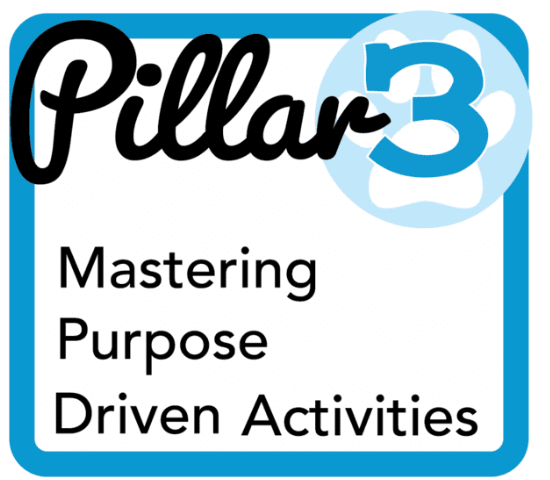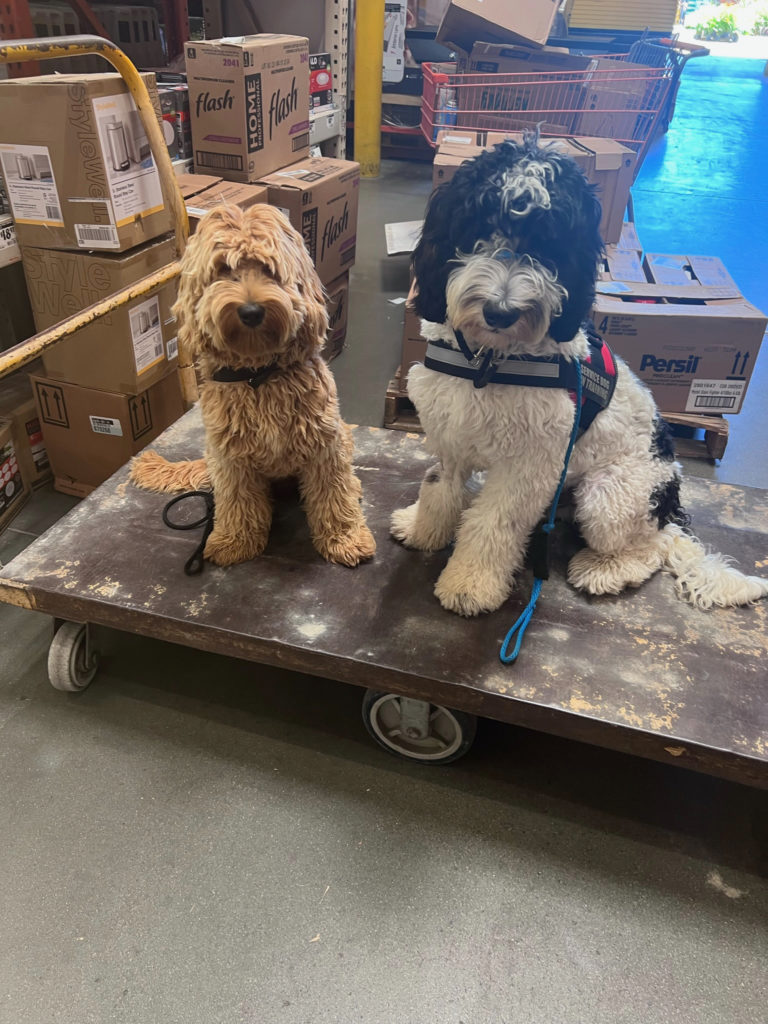
WALKING, TETHERING, PLAYING, PLACE
This is what you are doing when your dog is not in your crate.
Dogs love order, and when you practice leadership and boundaries in these activities you are building a solid foundation with your dog.
If you need a refresher on our Pillars of Pack Leadership, read PIllar 1 and Pillar 2.
This week we focus on PLACE!

Place for Training Dogs
“Place, place, place.” What the heck is it, and why should you use it with your pooch? I use place daily in my training with every puppy and dog.
I use PLACE because it teaches a dog and a human how to be better connected and how to have a calm state of mind.
A tall order for sure, but truly, place done right does achieve those goals.
Place is a defined space with a clear boundary. A dog is expected to remain on a specific place until invited off. It can be a dog bed, a blanket, mat, folded towel, sweatshirt, or anything comfortable.
I use raised dog beds when training place for two reasons:
- Dogs love them. They are comfortable, warm in winter, and cool in summer.
- Most importantly, these raised beds make it abundantly clear to both the dog and the human when the dog is getting off.
The use of place helps to lay the foundation in your dog for so many things: patience, impulse control, a future down or sit with duration, the ability to be calm in the face of a known trigger (like doorbells or food), relaxation, overall calm state of mind, respect of space, just to name a few. Place is where a dog can relax, chill out, get softly brushed, etc. Place is the place where all good things happen!
Here is what place is not when training puppies
Place is not a spot to play with toys when working the command. Place is not punishment. Place is never used in anger or commanded with an angry or cautionary tone. Place is not a grueling order like a military “stand at attention” until you break emotionally or physically. Supervision is still very much a part of place—it’s not a spot for you to leave and forget about your dog. Place is not optional; it begins and ends upon your invitation.
You begin using place with a dog in very small doses. I put a pup or dog on place at the beginning of a commercial and invite him off at the end of the commercial. Then I go for two commercials and build from there. Eventually, you can easily have a pup or dog successfully on place for an hour or so, as you watch a movie, sweep the patio, or pull weeds.
You guide your dog by giving direction from your leash or dog’s collar as you walk purposefully toward the designated place until all four paws are on, simultaneously saying the command “place.” Every once in a while, toss a treat onto place so your dog will magically find a treat there. It’s the dog’s choice to stand, sit, or lie down. He just can’t get off. Once on place, be sure to release all leash or collar pressure. The goal to work toward is being able to keep your dog on place without holding onto the leash and until he is invited off. Yes, that does mean that if even one paw comes off, you need to put him back on place immediately. And yes, that means every time he gets off uninvited.
I ask humans to use as few words as possible while pooch is on place. I am asking both dog and human to begin to clue in to each other and to be aware of what is going on. If pooch looks like he is going to step off, relax and breathe as you move in toward him, giving him a warning sound. If he stays on and looks at you, relax and take half a step back. If you need to, use leash pressure to put him back on place. Then, as he is able to tolerate it, keep stepping half a step back slowly. Keep breathing!
Once place is firmly established in your dog’s life and helps to promote a calm mindset in your dog, you can begin to add novel movements, sounds, and distractions. Gradually, you will add things that “trigger” your dog, such as: doorbells, open doors, food, other dogs, toys, bicycles riding by, etc. while they remain on place. It’s not enough to tell your dog, “No, don’t chase after that toy or bolt out the door.” You have to show him the right thing to do instead when faced with that exciting stimuli. Place is the place where dogs can comfortably tap into calm, even in the face of things that used to send them to the stratosphere.
How you exit place is as important as the calm you have achieved while on it. When you have your dog calm, quiet, and relaxed, that is when you go to him, gently massage him, and quietly take his leash and step off a few steps, finishing in a quiet sit. By not talking or barking out commands, you are actually helping your dog maintain all the calm that was achieved while on place. When you begin to move off place, should your dog decide to stay, just keep moving with steady pressure until pooch comes along with you. One of the reasons you have your dog’s leash on is so you can offer a bit more guidance if needed. Ultimately, not coming when invited is not on the list of available options!
Place teaches our dogs as much as it teaches us. Both partners are learning patience, consistency, and mutual understanding, as well as how to read each other’s body language better. It’s a powerful thing when we establish a calm state of mind and clear lines of communication with our dog, and when we learn how to do it with no words at all—priceless! You should practice place at least two times a day for about 20-30 minutes.
PUPPY PIT STOP: Be sure to use a RAISED DOG BED for this exercise. Also, start with getting your puppy on place, toss a treat and try to keep on for 10 seconds, then promptly invite off. You build up from there. Practice five minutes, four times a day for a week, growing the time gradually in each session. By the end of the week your goal is your puppy stays on the entire five minutes in that session. By the end of week two, the goal is ten minutes. By the end of week three you should be up to a 15 minutes session on place. With a puppy, you will adjust the 3 D’s (Distance, Duration & Distraction) gradually as you work each session.
